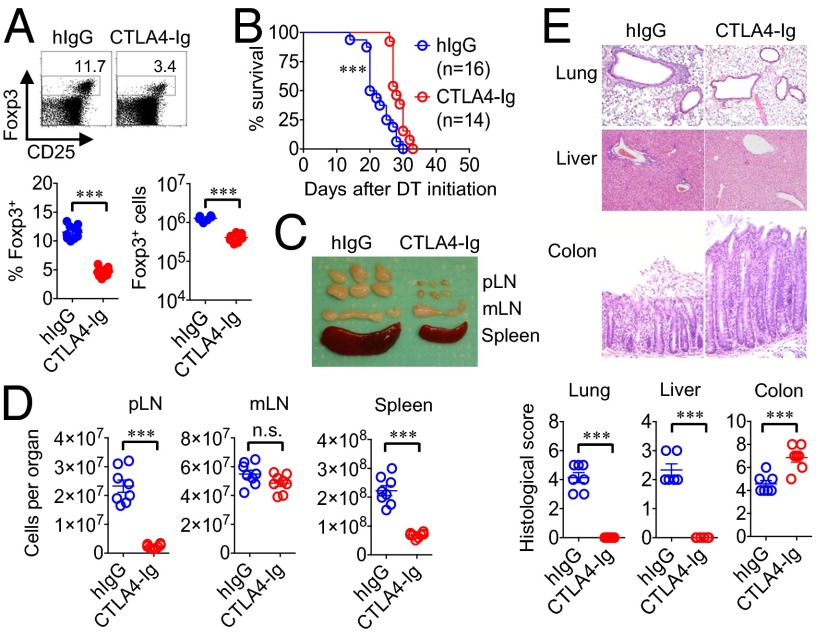Fig. 1.
Tregs remaining after CTLA4-Ig B7 blockade selectively avert intestinal inflammation. (A) Number and percentage of Foxp3+ among CD4+ splenocytes in B6 mice treated with CTLA4-Ig or human IgG isotype (hIgG) antibody for 10 d. (B) Survival for Foxp3DTR mice treated with CTLA4-Ig or hIgG (500 μg per mouse weekly) beginning 1 d before initiating sustained Treg ablation. (C) Enlargement of peripheral lymph nodes (pLN) (inguinal, axillary, brachial), mesenteric lymph nodes (mLN), and spleen for CTLA4-Ig– or hIgG-treated Foxp3DTR mice day 12 after initiating sustained Treg ablation. (D) Recoverable cell numbers in each tissue for mice described in C. (E) Representative tissue histology after H&E staining and cumulative analysis of inflammation disease score for mice described in C. These data are representative of at least three independent experiments, each with similar results. Error bars indicate mean ± SEM. ***P < 0.001.

